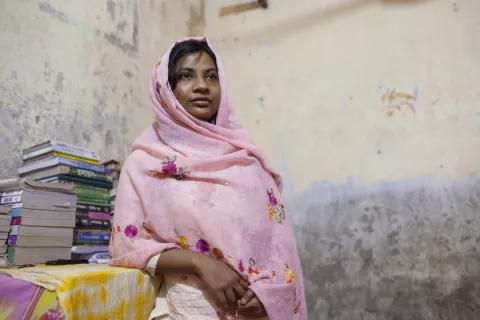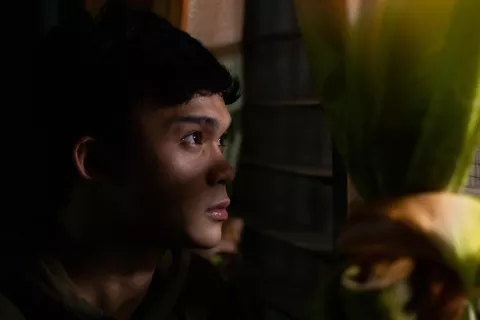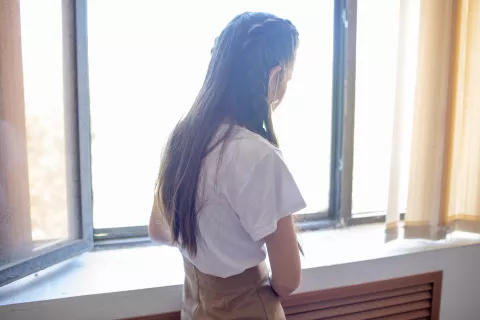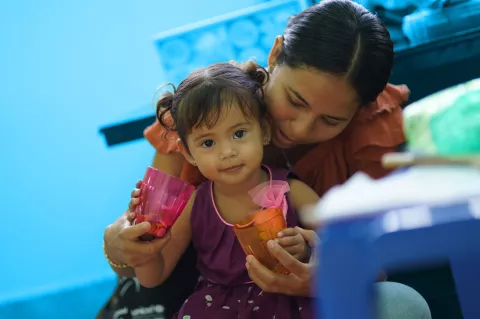Community-based mental health care in Peru
A community-based model helps a child in need experience positive change.
![Andre [NAME CHANGED], 14, stands in the grounds of a repurposed sports stadium in Carabayllo, a district in the north of Lima, Peru, while he waits for the time of his scheduled appointment to be seen at the Community Mental Health Centre that now occupies a building there.](/sites/default/files/styles/hero_extended/public/UN0476519.jpg.webp?itok=3pAtY2Me)
At age 14, Andre* (name changed) considers himself open-minded and able to adapt to new circumstances. About two years ago, however, his mother, Roxana, received a distressed phone call from Andre’s school.
“He was under a desk, crying, and saying that he didn’t want to keep living,” Roxana said.
Roxana knew her son needed help. But she and Andre live in the northern outskirts of Lima, where they share a small room in an aunt’s house. The hospitals and private clinics were too far away – or too expensive. However, a visit to a local health centre provided them with public health insurance and a referral to the Community Mental Health Centre in Carabayllo, a 10-minute bus ride from their home.
The Community Mental Health Centre is housed in a repurposed municipal stadium and staffed by a multidisciplinary team that includes psychiatrists, psychologists, nurses, a social worker and pharmacy staff. The centre provides services aimed at preventing mental health conditions and specialized care for people with moderate to severe mental health conditions, including children and adolescents.
At the community centre, the professionals diagnosed Andre with anxiety and depression linked, in part, to his parents’ separation. He was prescribed an antidepressant and referred to a psychologist, psychiatrist and social worker for therapy.
“We made an integrated plan to help him understand and manage what he’s going through,” psychologist Yesica Chambilla said. “We provided him with tools to make his own changes.”
The mental health centre also provided guidance to Roxana, who plays an active role in her son’s care.
The model focuses on offering services at the primary health-care level, close to where people live.
The integrated plan is part of Peru’s community-based mental health care model. The model focuses on offering services at the primary health-care level, close to where people live, and where they can access their communities’ network of support.
The community-based model was instituted in response to a gap between the need and the availability of mental health services in Peru. In 2013, Peru’s Ministry of Health estimated that one in five people had mental health conditions. The ministry also estimated that only one in five of those people received the care they needed. At the time, mental health care in Peru was concentrated in three hospitals in Lima.
Inspired by the need and supported by advocacy from the Ombudsperson’s Office – an oversight body that protects people’s rights and monitors the delivery of public services – the Government of Peru instituted a series of reforms to expand community-based care that included adding mental health-care coverage to the national health insurance scheme and establishing a mental health results-based budget programme that helped boost public spending. In 2019, Peru passed a new national mental health law.
As a result of these actions, the country’s network of community-based mental health care centres increased in number from 22 in 2015 to 203 in 2021. The centres are complemented by 30 specialized units in general hospitals and 48 halfway houses. The COVID-19 pandemic put these advances to the test.
According to an online survey conducted by the Ministry of Health and UNICEF in 2020, a third of children and adolescents in Peru experienced socioemotional difficulties during the pandemic. The 106-day national lockdown from 16 March to 30 June 2020 left many adults, including Roxana, temporarily unemployed. Children and adolescents, including Andre, were confined at home. The demand for mental health services increased.
In response, the Ministry of Health, with UNICEF’s support, released specific guidance for adolescent health care in the context of COVID-19 in 2020 and technical guidelines for comprehensive mental health care of adolescents in 2021. With support from UNICEF and CEDAPP, a non-governmental organization that provides psychosocial services, Peru’s Ministry of Health piloted a free mental health hotline for adolescents and their families. From December 2020 to April 2021, the hotline reached 821 individuals struggling with anxiety, depression and family problems; 48 per cent were adolescents.
“Looking ahead, there are two important challenges,” said Dr. Yuri Cutipé, Executive Director, Mental Health, Ministry of Health. “One, continuing to expand community-based services while ensuring the same quality across the country; and two, developing specific programmes for vulnerable populations as a part of a multisectoral approach.”
For Andre, the lockdown was stressful, but he was able to speak regularly with his psychologist by phone. He also spent more time with his mother, whom he usually only saw late at night after she returned home from her job on the other side of Lima.
“I made up for lost time with my son,” Roxana said.
More than a year after his first visit to the centre, Andre is coming off his medication and experiencing positive changes.
“Before coming, things were really bad,” Andre said. “I felt sick and didn’t want to eat. Now I feel much better, and I don’t want to give up.”
*Andre and Roxana are pseudonyms used to protect their identities. They were interviewed in Lima in June, 2021. This and other stories like theirs feature in the State of the World’s Children report 2021 - On My Mind: Promoting, protecting and caring for children’s mental health.




